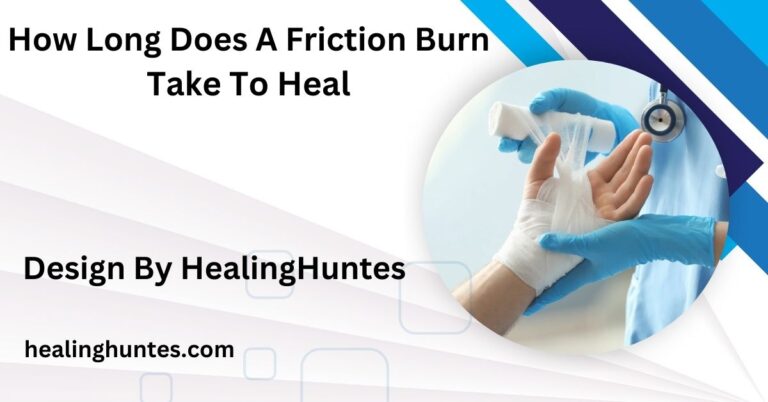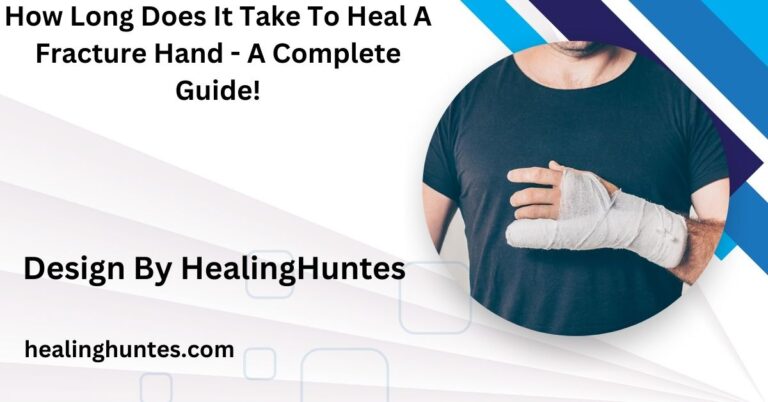Signs A Broken Bone Is Not Healing – Key Indicators!
Broken bones that aren’t healing may show signs like persistent pain, swelling, limited mobility, or deformity. Early diagnosis is essential to address the issue and prevent long-term complications.
Here’s a comprehensive guide on what to look for, why it happens, and how you can help your bone heal faster.
Persistent Pain: When It Doesn’t Go Away:

Healing bones typically experience a reduction in pain over time. However, if the pain is constant or worsens weeks after the injury, it may be a sign that the bone is not healing correctly. Persistent or increasing pain could indicate delayed union, where the bone takes longer than normal to heal, or a nonunion, where the bone fails to heal altogether.
Swelling That Lingers or Worsens:
Swelling is natural after a fracture, but it usually subsides as the healing progresses. If the swelling remains pronounced, changes in color, or even worsens over time, it could signify an underlying problem in the healing process. Chronic inflammation often indicates the body is struggling to repair the fracture, possibly due to inadequate blood flow or infection.
No Improvement in Mobility:
A crucial part of recovery is gradually regaining the ability to move the affected area. If you notice no improvement in mobility or if movements are still highly restricted after the expected recovery period, it may mean that the bone isn’t properly healing. This issue could be linked to weakened bone structure or insufficient callus formation, the bone’s natural healing tissue.
Instability Around the Fracture Site:
Broken bones should regain stability over time. However, if the area around the fracture feels unstable or weak, it might be a sign of poor healing. Instability often indicates that the bone isn’t fusing as expected, which can lead to future fractures or chronic pain. Seeking medical evaluation promptly can help in adjusting treatment and promoting stability.
Also Read: How Long Do Ear Piercings Take To Heal – Healing Time for Cartilage Piercings!
Visible Deformity or Abnormal Bone Position:
Sometimes, broken bones that don’t heal properly may look visibly misaligned or deformed. This deformity occurs when the bone fragments fail to fuse in the correct position, leading to malunion. In cases where bones heal incorrectly, corrective surgery might be needed to realign the bone and restore proper function.
Delayed Callus Formation:
During bone healing, a callus (a form of natural bone repair tissue) forms around the fracture to stabilize it. If, after several weeks, there’s minimal to no callus development, it’s an indicator that the bone healing process is stalled. Lack of callus can be due to factors like insufficient immobilization, nutritional deficiencies, or underlying health conditions.
Changes in Skin Temperature:
An unusually warm area around the fracture can indicate inflammation, a common part of the healing process. However, if the warmth persists for an extended period or if the area becomes hot to the touch, it might signal infection or improper healing. Such changes in skin temperature should prompt a medical consultation to rule out complications.
Persistent Bruising Around the Fracture Site:

Bruising is typical immediately after a fracture but should fade over time. If bruising around the injury site remains for weeks or reappears, it could indicate that the bone has not adequately healed. Persistent bruising may also signal problems with blood flow or soft tissue damage around the fracture.
Unusual Sensations Like Tingling or Numbness:
If you’re experiencing unusual sensations like tingling, numbness, or pins and needles around the fracture, it could indicate nerve involvement, especially if these symptoms persist long after the injury. Sometimes, fractured bones may impact nearby nerves, and if not healed properly, they can lead to ongoing nerve irritation.
Causes of Poor Bone Healing:
Poor bone healing, or delayed union and nonunion, can stem from various factors that affect the body’s ability to regenerate bone tissue properly. Here are some common causes:
Also Read: How Long For Muscle Strain To Heal – A Complete Guide!
Insufficient Immobilization:
A broken bone requires stability to heal, often achieved through casts, splints, or surgical fixation. If the fractured area isn’t adequately immobilized, bone fragments can shift, disrupting the natural healing process and leading to delayed healing.
Inadequate Blood Supply:
Blood circulation is essential for delivering nutrients, oxygen, and immune cells to the site of injury. Bones with compromised blood supply, such as fractures in areas with less vascularity (like the scaphoid in the wrist), can struggle to heal. Additionally, severe trauma can damage blood vessels around the fracture, further hindering recovery.
Nutritional Deficiencies:
Essential nutrients like calcium, vitamin D, vitamin C, and protein play a key role in bone healing. Vitamin D, for example, aids in calcium absorption, while vitamin C is necessary for collagen formation, a vital component of bone structure. A diet low in these nutrients can impair the bone’s ability to regenerate effectively.
Smoking and Alcohol Use:

Both smoking and excessive alcohol consumption are known to interfere with bone healing. Nicotine in cigarettes restricts blood flow, reducing the oxygen and nutrients needed for bone repair. Alcohol can decrease bone density and disrupt the body’s hormonal balance, delaying the bone regeneration process.
Underlying Health Conditions:
Conditions such as diabetes, osteoporosis, and thyroid disorders can impede bone healing. Diabetes, for instance, affects blood flow and immune function, while osteoporosis weakens bone density, making it harder for bones to regenerate. Other systemic conditions, like autoimmune diseases, may also slow healing due to chronic inflammation.
Also Read: How Long Do Nose Piercings Take To Heal – A Comprehensive Guide!
Improving Bone Healing:
- Ensure Proper Immobilization: Using braces or casts as prescribed helps the bone remain stable.
- Focus on Nutrition: Calcium, vitamin D, protein, and magnesium are essential for bone health.
- Avoid Smoking and Alcohol: These substances delay healing by affecting blood flow and bone density.
- Physical Therapy: Once the bone has healed adequately, therapy can strengthen the surrounding muscles and joints.
FAQ’s
1. What are the first signs that a bone isn’t healing?
Persistent pain and prolonged swelling are common initial signs that a fracture isn’t healing correctly.
2. How long should a broken bone take to heal?
Most fractures heal in about 6 to 8 weeks, but it can vary depending on the bone and individual health.
3. Can I speed up the healing of a broken bone?
Yes, proper nutrition, immobilization, and avoiding smoking can enhance healing.
4. Is surgery needed if a bone doesn’t heal?
In some cases, surgery is required to repair or realign bones that aren’t healing.
5. What happens if a broken bone never heals?
If left untreated, a non-healing bone can lead to chronic pain, deformity, or decreased function in the affected area.
Conclusion
Identifying the signs that a broken bone is not healing can prevent further complications and unnecessary pain. Early intervention can make a significant difference in recovery. Properly addressing nonunion and malunion fractures often requires medical consultation, lifestyle adjustments, and in some cases, surgery. If you suspect your bone isn’t healing correctly, contact a healthcare provider for a thorough evaluation and tailored treatment plan.






